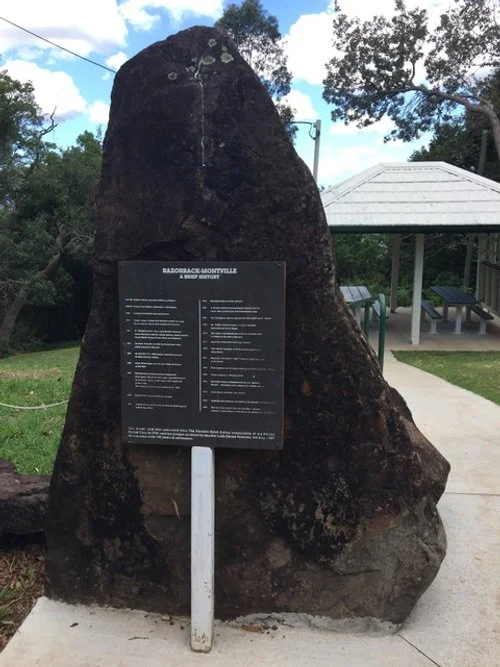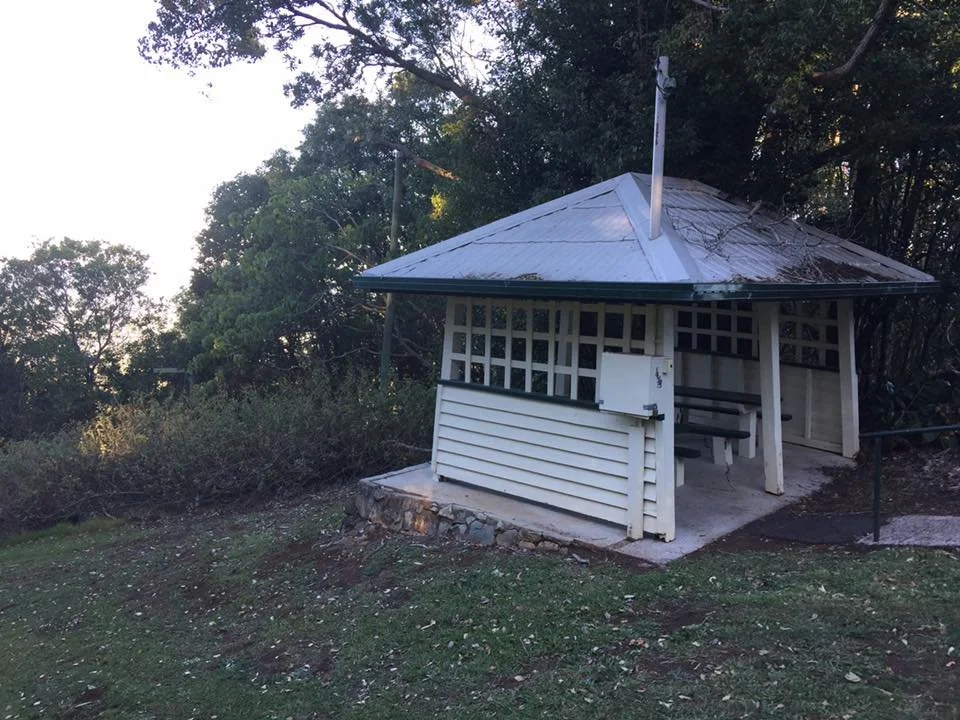Set in stone: a brief History of Montville
The Razorback Outlook Plaque outlines a brief, but fascinating history of Montville, which used to be known as Razorback.
The plaque is in the park at the end of the School Road, Montville, which runs next to the school grounds.
This basalt rock, pictured, was unearthed from the Narrows Road during construction of the Baroon Pocket Dam in 1986 and the Razorback Outlook Plaque was unveiled by Senator Lady Bjelke-Petersen on May 3, 1987 to commemorate 100 years of settlement.
It outlines a brief, but fascinating history of Montville, which used to be known as Razorback.
The plaque at Razorback Lookout at the top of the escarpment offers a place to sit for quiet reflection. It is at the end of the School Road, Montville, which runs next to the school grounds. Settlers arrived to 'Razorback' in 1887, the town was later named 'Montville' by Henry Smith after his childhood memories of Montville in the USA.
1837-1840: Andrew Petrie collected timber specimens.
1842-1859: The Bunya Proclamation stated that Bunya country was reserved for indigenous Australians so until Queensland became a state and the Proclamation was rescinded this area could not be occupied by non-indigenous Australians.
1844: Ludwig Leichhardt explored Baroon Pocket.
1872: Cedar cutters Gillies and Mitchell visited the area but moved on due to the lack of grass for bullocks.
1881: E J Burnett and G L Bury were the first selectors. Early selections were for timber getting. Major timber being Beech, Bunya, Cedar, Hoop and Boxwood.
1884: Surveyor Delisser located the razorback route which passes by this spot (at Razorback Outlook).
1881: Joseph Chapman Dixon and his wife Alice selected the first blocks at Flaxton
1887: Thorvald Peter Ludwig (TPL) Weitemeyer selected and took up residence with his pregnant wife Jane and three children on Portion 11v in the Parish of Maleny.
1888: Harry Weitemeyer was the first white child born in the area
1891: Railway from Brisbane reached Palmwoods. Remington’s Shute was first used. Logs were brought by bullock wagons to the edge of the Range and pushed over.
1896: Razorback Provisional School opened.
1897: The first Receiving Office was run from the home of Henry and Jane Smith.
1903: Montville School of Arts was built.
1905: Alfred Bowser started the pineapple industry and 25 years later planted the first Macadamia trees on his property on Mill Hill Road.
1906: The Fred Thompson family extended the first guest house ‘Elston’ originally established by the Dalton family more than 10 years earlier.
1909: Mr Alfred (Fred) Smith purchased a 16hp 2-cylinder International Motor Buggy which was driven solely by his youngest son, Monty.
1910: The route of the Razorback Road was changed with a cutting on the side of the spur.
1912: The Methodist (now Uniting Church) was built.
1914: St Mary’s Anglican Church was built.
1917: Montville Telephone Exchange opened.
1929: The Montville-Palmwoods Main Road was officially opened.
1940: Connection to the electricity grid began for Maleny and Montville residents.
1945: First commercial avocados were packed in Montville by Mr J Wilson.
1960: Power was supplied to the end of Western Road.
1966: The Montville Pottery established by Mrs A.E. (Bimmy) Everett, was Montville’s first commercial cottage industry.
1969: Main Road, Montville was sealed.
1975: Montville first became for the quality of its restaurants.
1980: The last dairy closed down when Mr and Mrs Vince Sinclair of Western Avenue ceased to send cream to Caboolture Coop Association, Maleny.


